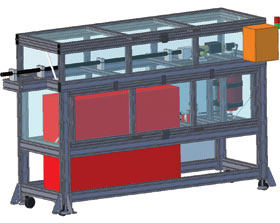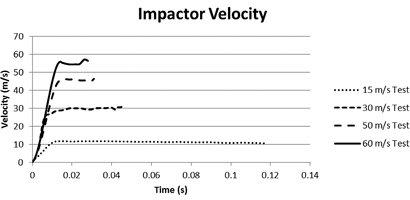

Tectra Automation designed and constructed a pneumatic impactor for the Council for Scientific and Industrial Research (CSIR) in Pretoria. Capable of firing a cylindrical bar up to 50 metres per second, the impactor will form an integral part of the institute’s Landward Science Competency Area material research and development studies.
Designed to assess the stress response of materials as part of a Split Hopkinson Bar Test system, the impactor was designed to fire a cylindrical bar of a specified weight and size against instrumented target bars which encapsulated the test item, as well as to record the loading stress wave that transmitted through the test specimen. The current Landward Science material science testing is geared towards the testing of materials at higher strain rates in the region of 102 to 104 s-1.
Tectra Automation was the most suitable supplier for this specialised project, having the necessary expertise required for the impactor’s design and construction. The project was contracted as a complete turnkey solution, from research and design to manufacture and commissioning.
The impactor – with a length of 2,6 m, height of 1,5 m and width of 0,7 m – was equipped with an array of specialised pneumatic componentry for achieving the high specification discharge, including quick release valves, pressure intensifier and accumulator. The 25 mm internal diameter barrel was comprised of a specialised hydraulic tube capable of bearing pressure up to 300 bar with a 5 mm wall thickness and was designed to be easily changed as required by the research.
Test parameters, including the size, weight and discharge speed of the cylindrical bar, were programmed by the operator through a Bosch Rexroth HMI. Based on these inputs, the internal programmable logic controller automatically calculated the pressure at which to launch the cylindrical bar, as required by the material test.

The arming and firing of a cylindrical bar – which occurred through remote activation – was conducted through a controlled initiating sequence, including keyed activations, to ensure a safe operating environment for the use of the machine. The barrel drew a front-loaded cylindrical bar via a specialised vacuum valve, which limited the operator requirements in front of the barrel.
Project engineer, Jaco de Beer explained, “Our theoretical calculations in the design and conceptualisation of the unit were remarkably close to the physical performance measurements we determined once the impactor was assembled. Programmer input speeds of 15, 30, 50 and 60 m/s produced actual corresponding speeds of 11,8, 30,9, 46,4 and 57,1 m/s. As a unique engineering assignment for Tectra Automation – which started from ground-level process research – the fact that we could design and develop the hi-tech device to client specifications was a proud accomplishment for the project team.”
Tectra Automation will provide maintenance and additional component supply for any future developments the CSIR may wish to implement to the impactor.
For more information contact Jaco de Beer, Tectra Automation, +27 (011) 971 9400, [email protected], www.hytecgroup.co.za
| Tel: | +27 11 971 9400 |
| Fax: | +27 11 971 9440 |
| Email: | [email protected] |
| www: | www.boschrexroth.africa |
| Articles: | More information and articles about Tectra Automation |
© Technews Publishing (Pty) Ltd | All Rights Reserved